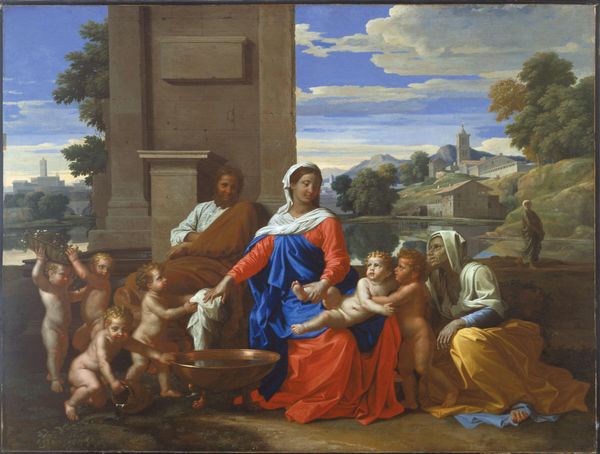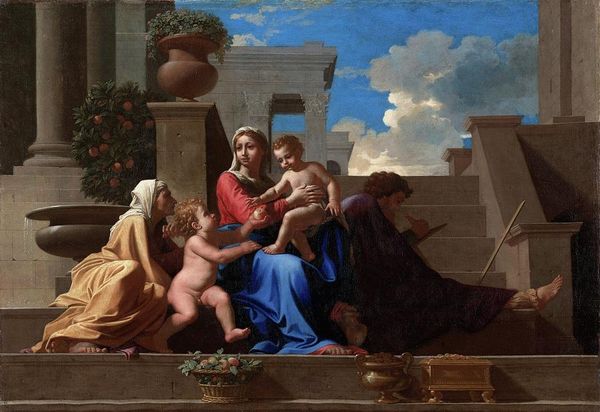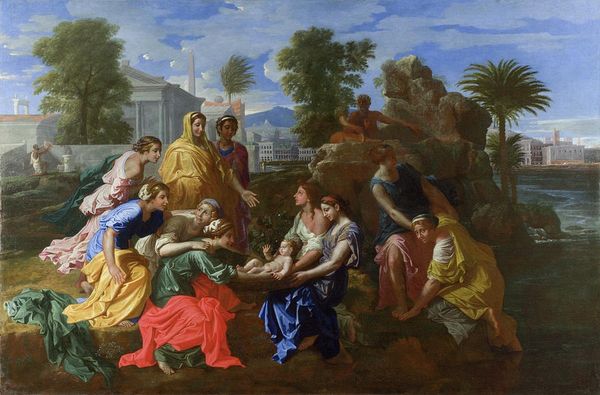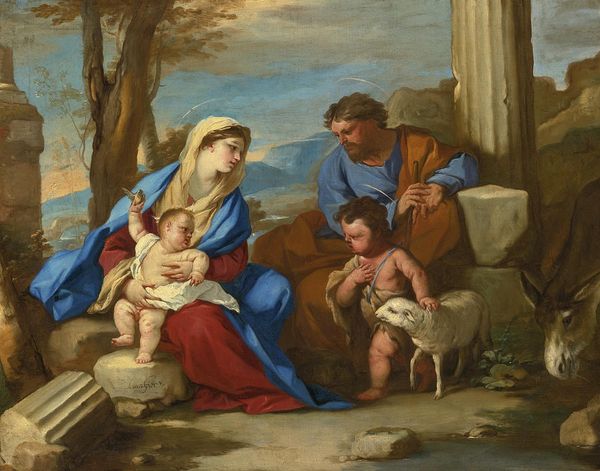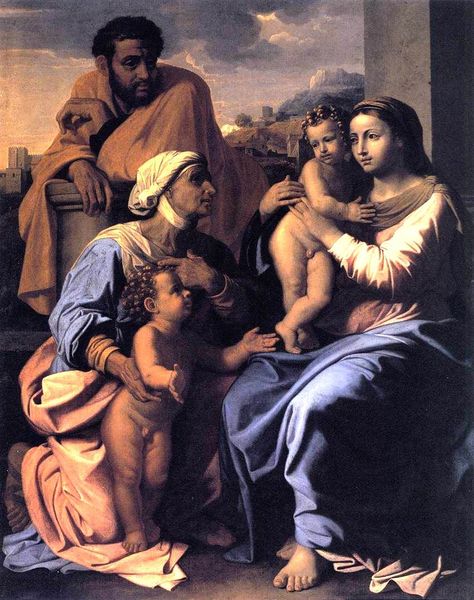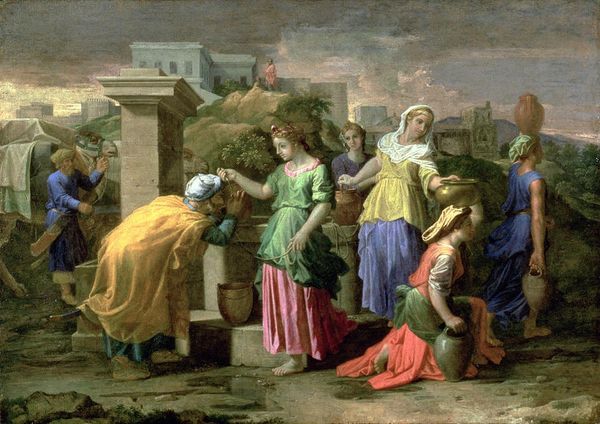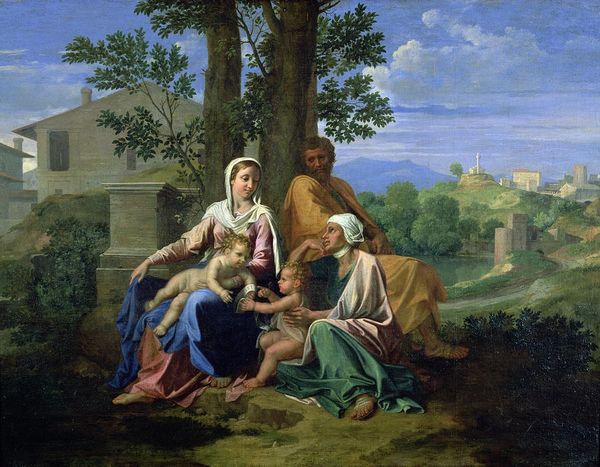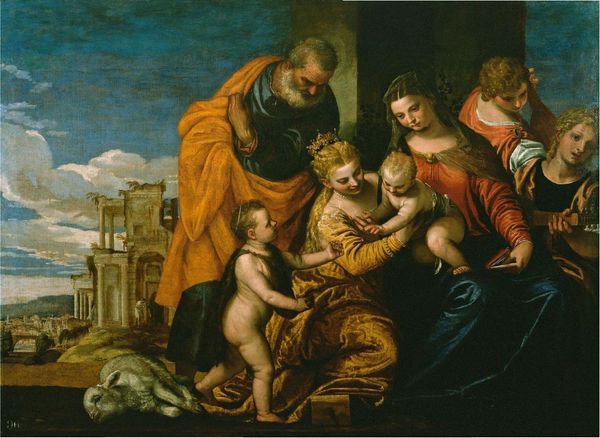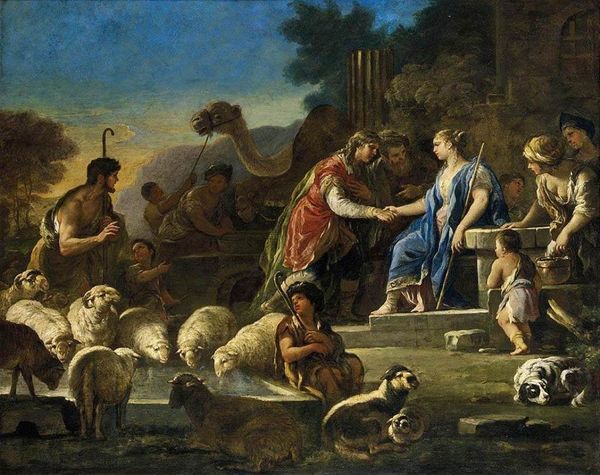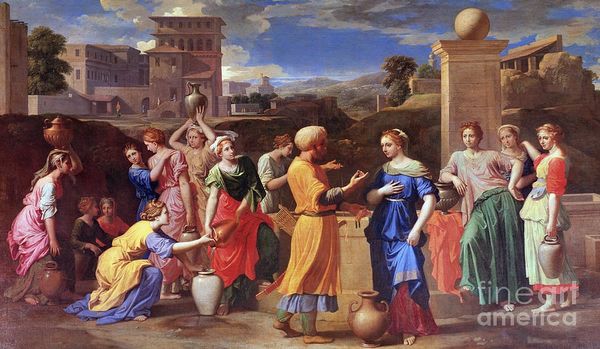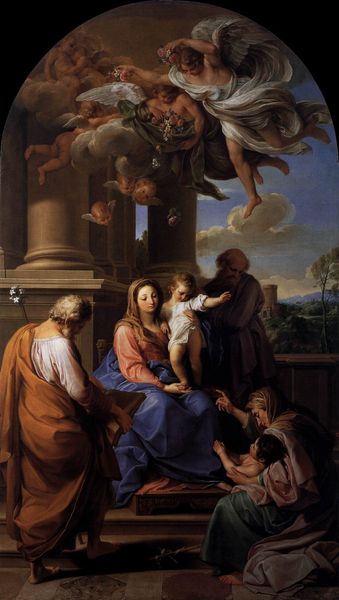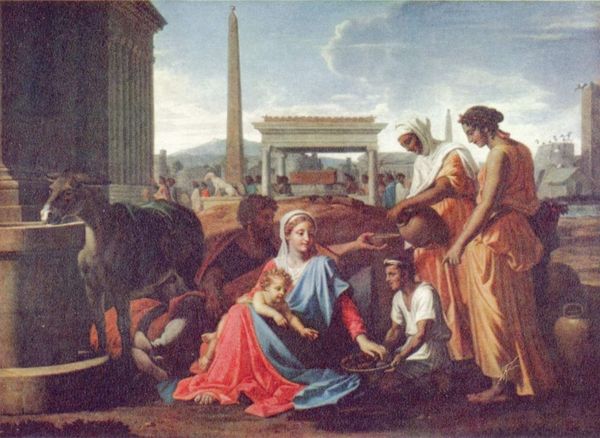
painting, oil-paint
#
portrait
#
allegory
#
baroque
#
painting
#
oil-paint
#
landscape
#
oil painting
#
christianity
#
mythology
#
history-painting
#
portrait art
#
virgin-mary
Dimensions: 97.8 x 129.5 cm
Copyright: Public domain
Editor: Here we have Nicolas Poussin’s “Holy Family,” painted around 1650. There's a stillness to the scene, yet it feels like there is underlying activity, if that makes sense. I’m particularly struck by the formal structure, the way figures are arranged against this balanced background landscape. How do you interpret the historical significance of Poussin's composition? Curator: That's a keen observation. Poussin was deeply concerned with how paintings should convey civic and moral lessons, placing emphasis on clarity and order during the Baroque period, when art increasingly served state interests through dramatic displays. Consider the idealized setting. It isn't simply decorative. Rather, it represents an ordered vision of the world, projecting power and stability in post-Reformation Europe, specifically Rome, where he worked for elite patrons. Editor: So the landscape plays a political role, even beyond just setting a beautiful scene? Curator: Precisely. Poussin revived classicizing ideals, drawing inspiration from ancient Greece and Rome. How might this appeal to the patrons who viewed art like this? Think about the power associated with antiquity. Editor: Ah, I see. Displaying control through this type of artistic order. Like, “We are the new Rome; we create stability.” So a painting in the domestic sphere reinforced political and religious ideas about hierarchy. Curator: Yes, exactly. Also consider the subtle integration of classical architecture into what seems like a pastoral landscape, a reminder of an ideal past shaping a Christian present. How effective do you think such imagery might have been for shaping public perception? Editor: That’s fascinating. It definitely reframes how I view so-called religious paintings. I tend to just focus on the spiritual side, but thinking about the message behind the imagery makes me realize I miss so much. Curator: Agreed! Art of this period really demanded its audiences be skilled readers of symbols, reflecting elite training and education and thus subtly influencing culture. This conversation offers many avenues to consider as we go forward.
Comments
No comments
Be the first to comment and join the conversation on the ultimate creative platform.
